A Perfect Fall Cheese Platter
How to prepare a seasonal cheese platter that will be both delicious and picture-perfect
For some years now, one food thing that has been trending, specially during these coming social months, are cheese platters. Search “charcuterie board”, “cheese platter” or “cheese board” on Pinterest, Instagram, Tik Tok and digital magazines and you’ll get thousands of results.
A cheese or charcuterie platter is a great first course to serve if you are hosting a small party: it’s social, each person can choose what to eat and if you know how-to, it can look spectacular too.
From my recent trip to Vermont I bought a lot of cheese so I thought I could walk you through how to create a cheese platter that you’ll want to serve these coming holidays and social gatherings and that will impress your guests. It’ll be both delicious and picture-perfect. Just how I like it.
A perfect balance of flavours and textures
Let’s start with what’s most important: the flavour. You’ll ask: how can you go wrong with putting together cheese, crackers and cold meats? Well, you can. Or maybe not wrong, because it’ll be eaten anyways, but you could miss a couple of points that won’t get you to perfection.
Not all cheese is the same
This sounds obvious but it isn’t. You may love cheddar cheese but you cannot fill your platter with cheddar only if you want other people to also enjoy it. It should contain 3-4 different kinds if your party is small and up to 6 if it’s bigger. The following cheeses will make your platter varied enough:
Hard cheese: Aged, mature cheese. I used Cabot Creamery 10 year cheddar. Others are: Parmiggiano Reggiano, Pecorino Romano, Manchego.
Semi-hard cheese: Firm in texture but not as crumbly as the latter. I used Jasper Hill Farm Alpha Tolman. Others are: Cheddar, Emmental, Edam, Gouda, Monterey Jack, Gruyère.
Soft bloomy-rinded cheese: Soft interior with a white skin, matured for a few weeks. I used Jasper Hill Farm Harbison. Others are: Brie, Camemberg.
Soft cheese: Creamy and unripened. I used Vermont Creamery goat cheese. Others are: Cottage cheese, Mascarpone, Ricotta.
Blue Cheese: Creamy and pungent with recognisable blue veins. I used Jasper Hill Farm Withersbrook Blue. Others are: Gorgonzola, Roquefort, Cabrales, Stilton.
Smoked Cheese: Any cheese treated by smoke-curing. It is not essential but it brings another note to the table. I used Shelburne Farms smoked cheddar.
This is just a classification in terms of texture and preparation, which will bring you variety, but if you want to go even further, you could group them by type of milk or country of origin!
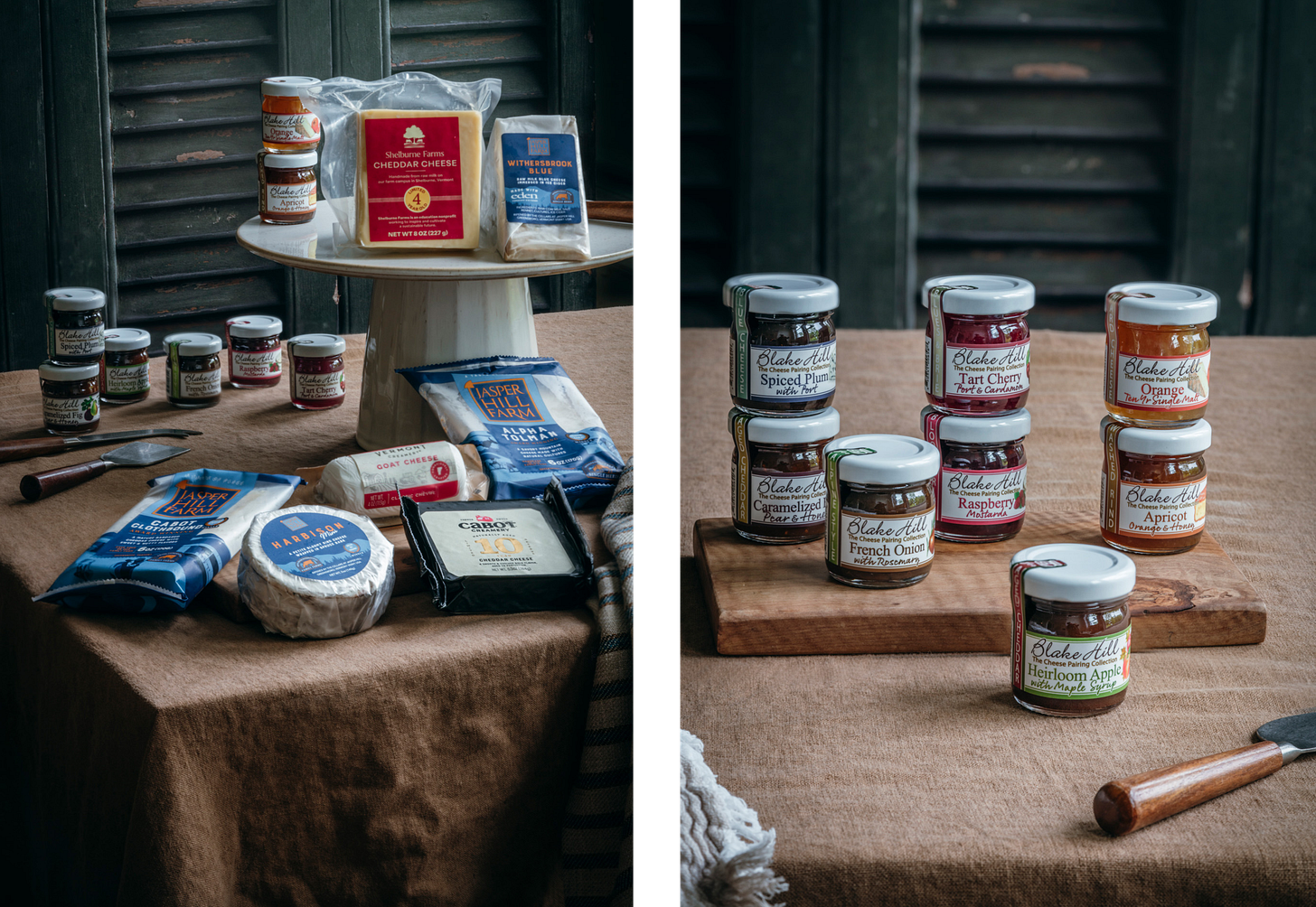
Think of pairing flavours
I see many cheese boards that look great but I am not sure if I’d like to eat. They have too many different elements that don’t make much sense together. Once you have your selection of cheeses, you can think of flavours that will pair well with each of them. This may mean alike flavours or contrasting ones.
I got a box of specialty jams from Bake Hill and I added them to the platter so each person could pick the cheese and add some jam on top depending on the kind they chose. Jams, chutneys, pickles and preserves are good starting points but make sure you are mindful with your decisions. If you are uncertain of what will go well with your specific cheese, ask your cheesemonger or look your cheese online for guidance.
These parings are made in heaven:
Hard cheese + nuts, apple, honey, olives, pickles, salted meats
Semi-hard cheese + nuts, dried fruit, onion jam
Soft-ripened cheese + berry an apricot jams, honey
Soft cheese + fresh fruit, salty nuts
Blue cheese + port, plums, grapes, nuts
Smoked cheese + grapes, apples, pickles, olives
As I wanted to bring seasonal flavours, I chose apples, grapes, plums, dried apricots, pecan nuts, salted pumpkin seeds and then also olives and pickles aside the jams. For bread I added small toasts and rosemary crackers for a herbal hint.
Add texture
These elements will be part of the flavor pairings but will also add crunch. Think of nuts, apple wedges, pears, crackers…
A picture-perfect platter
Once we have our elements, chosen for their flavours and textures, we can think on how to make them look pretty.
Choose a platter that makes sense
If you only have a couple of friends over it would be absurd to get a massive cutting board out. You’d have to fill it all up!
Look at the amount of cheese and complimenting elements you want to serve and choose a platter or board accordingly.
Not everything has to fit in, you can add other plates with extra elements and cheese around your table, but the platter should contain at least some of all your different types of cheese.
If you have a tone of options (lucky you!), you can choose not only by size but also by style. Think of the tablecloth you will dress the table with and pick a wooden board/platter if you want a more rustic look, or a marble/stone one if you want an elegant feel.
Cheese first
Always start with the cheese. This are our heroes and they need a dedicated space in the platter. In my case, I placed the Harbison in the middle because it was nice and round, the same shape as my platter. Then I positioned the rest of the varieties around it.
For the hard and semi-hard cheese, it’s better to slice different pieces and keep more in other plates to replenish. They will be easier to take by your guests and you can play with different shapes to make your platter look more attractive.
The soft-textured cheeses cannot be pre-cut, so make sure you add either the whole cheese or a good chuck of it to your board.
Fill it up
Once you have all the different types of cheese positioned, you can fill the gaps. Here I added two containers, one for some olives and one jam. If your platter is even bigger you can add more (honey, pickles, more jam), but you can also serve them outside of the platter. Visually they bring interest, though, because they frame the food and add a different materiality.
I started with the bigger components: the grapes and the bread. Then I added the salami wrapping it up in itself creating a wavy silhouette that brings shadows, which the camera loves. Finally, I filled up the last gaps with nuts, seeds and some apple wedges.
Mind the colors
Try to place similar colors opposite to each other or forming a triangle in space. See where I placed the green elements (grapes, apple wedges), and where I placed the red elements (pecans, salami). Having the yellow-white cheese as a neutral here, the placing of the other colors will make your eye travel around the platter searching for the match. It’s an easy way to bring dynamism and interest to your board.
Think outside the platter
Not all of us have multiple platters or boards to choose from. So if yours is not big enough to add all your elements, make it really pretty with your variety of cheeses and complimenting accents and add the rest in other plates around the table.
You will have a visual impact with your stylised platter but will also make it all accessible to the guests that are sitting farther away from it by adding its elements in different plates.
Don’t forget the serving aids
Ideally you’ll serve the platter with cheese knives, but if you don’t have any, go for soft edge knives and spreading tools so everyone can get a serve of the soft cheeses.
To wrap it up
To wrap it up, here’s a summary of what we’ve been talking about:
Bring enough variety to your cheeses.
Find complimenting and contrasting seasonal flavors.
Bring texture.
Start styling the platter with the cheese and then fill it up.
Place same color elements opposite to each other.
Add other elements in other plates outside the platter.
Bring enough knives and forks to serve the cheese.
Enjoy your cheese platter and tag me in your photos so I can see them!





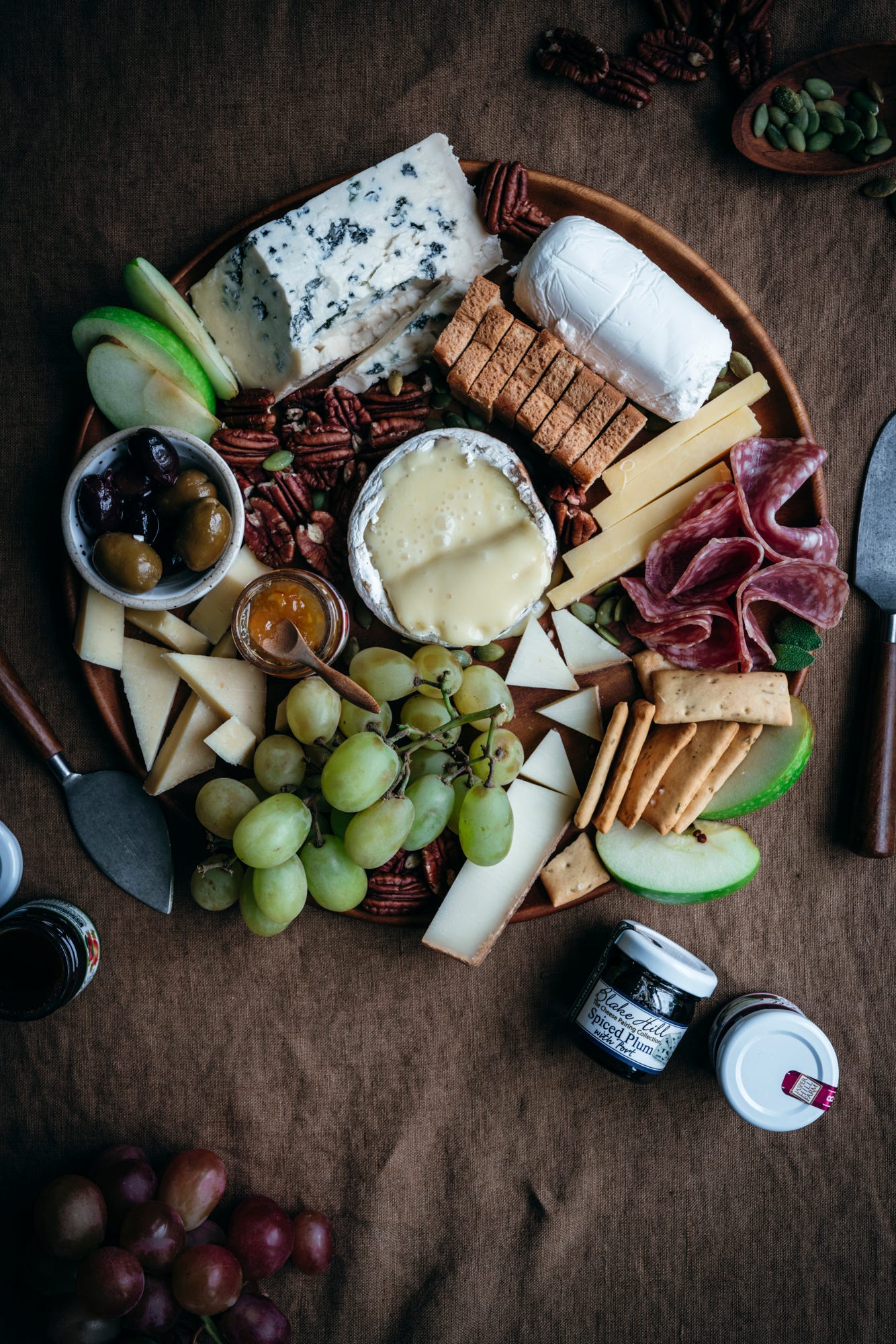

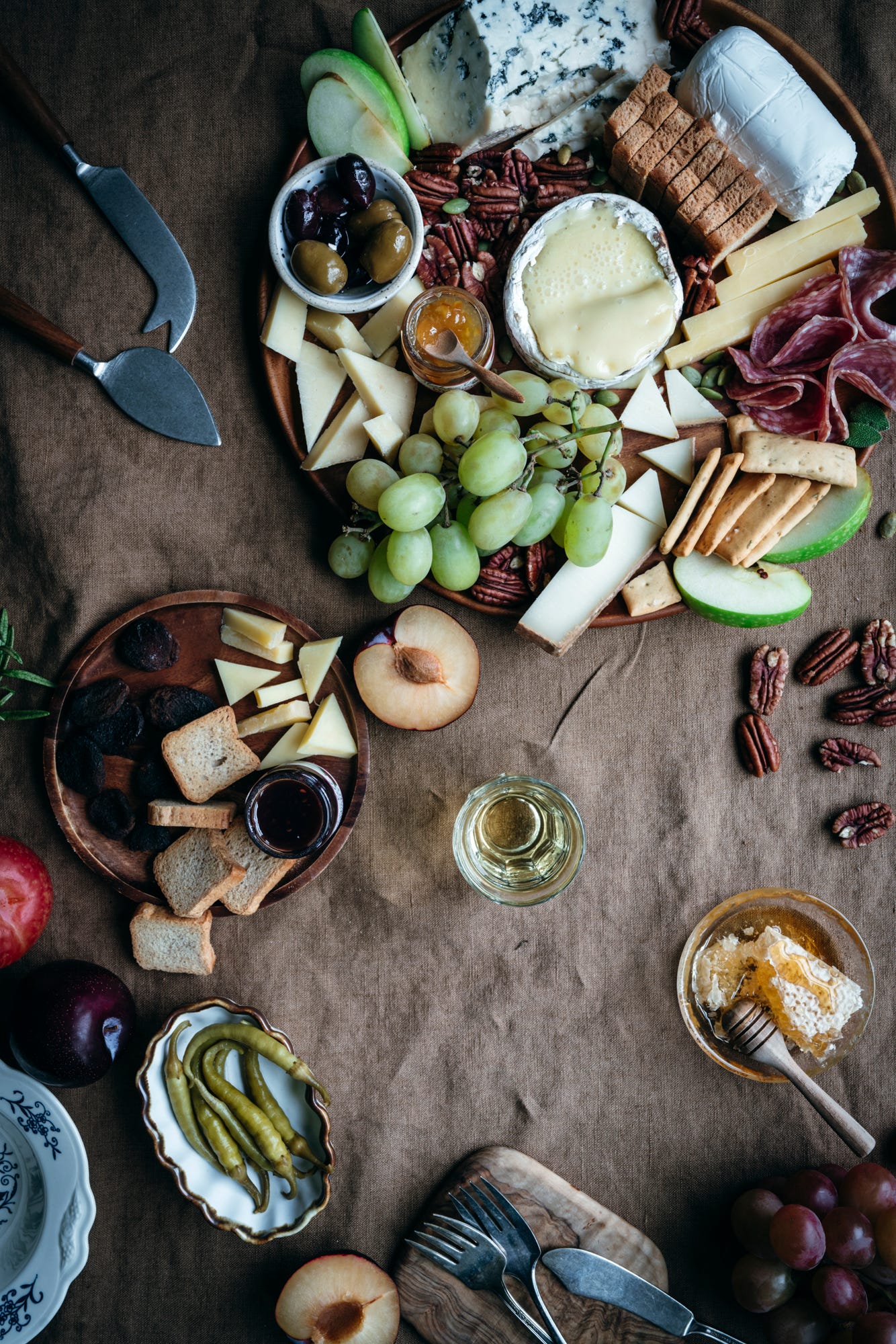
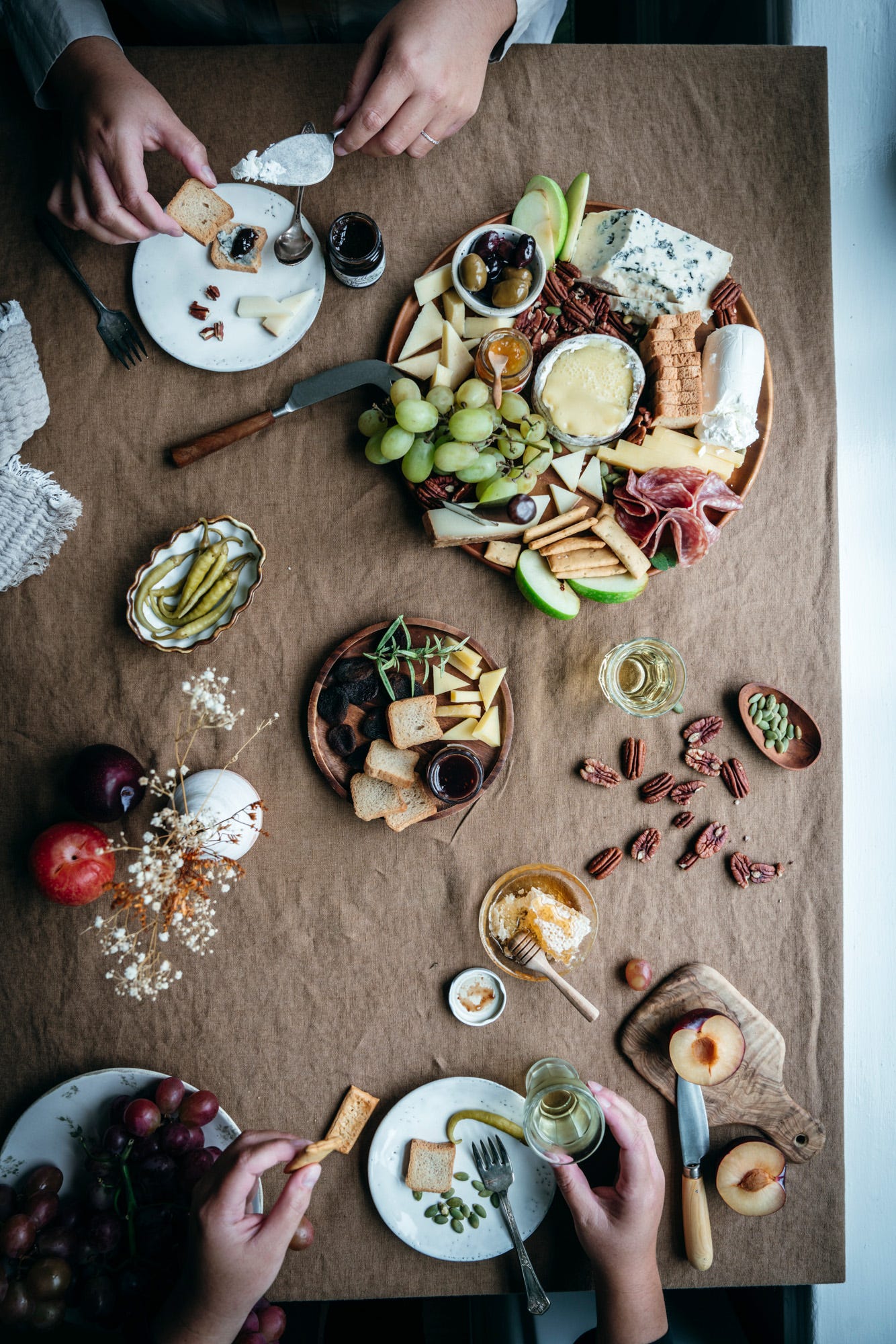
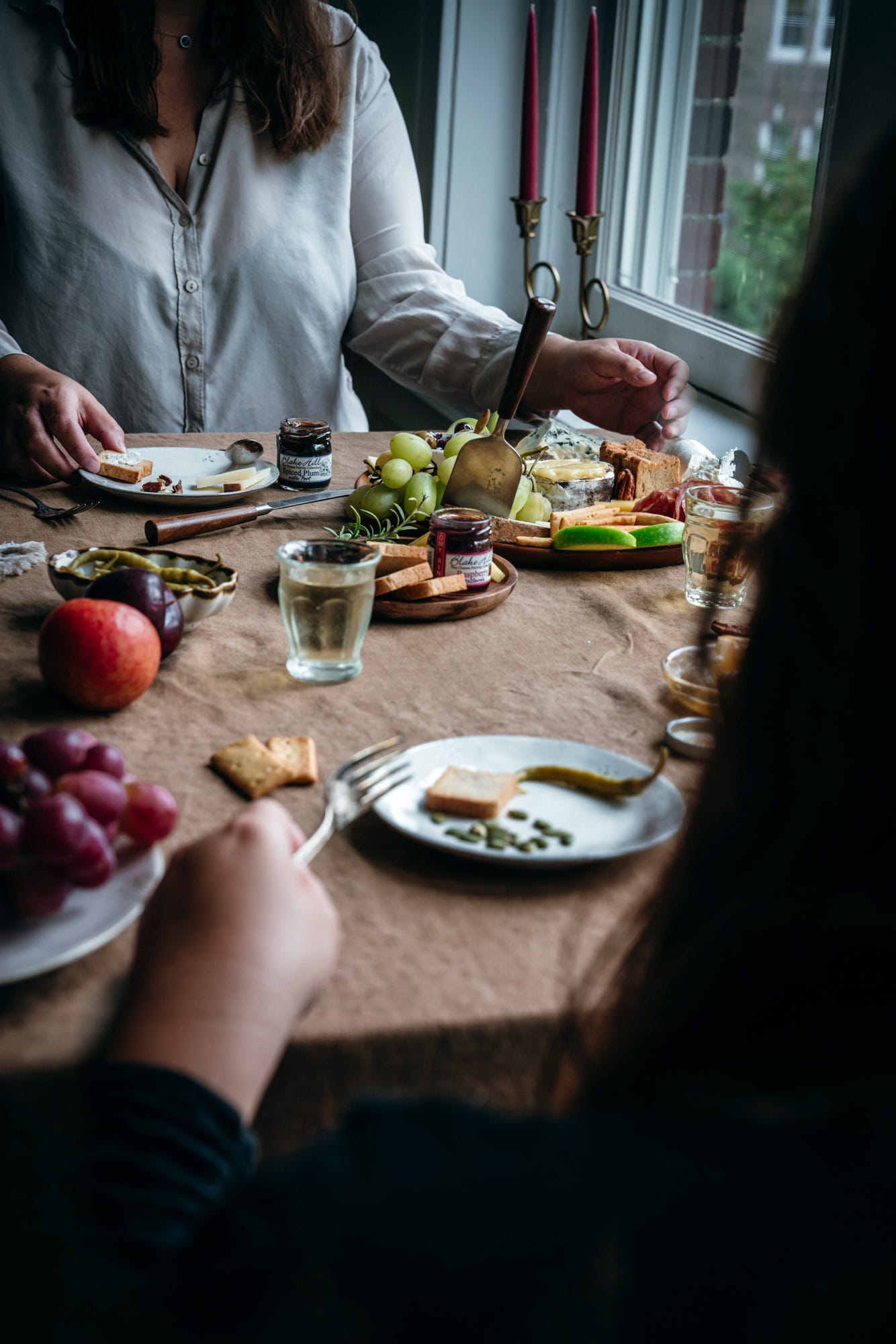
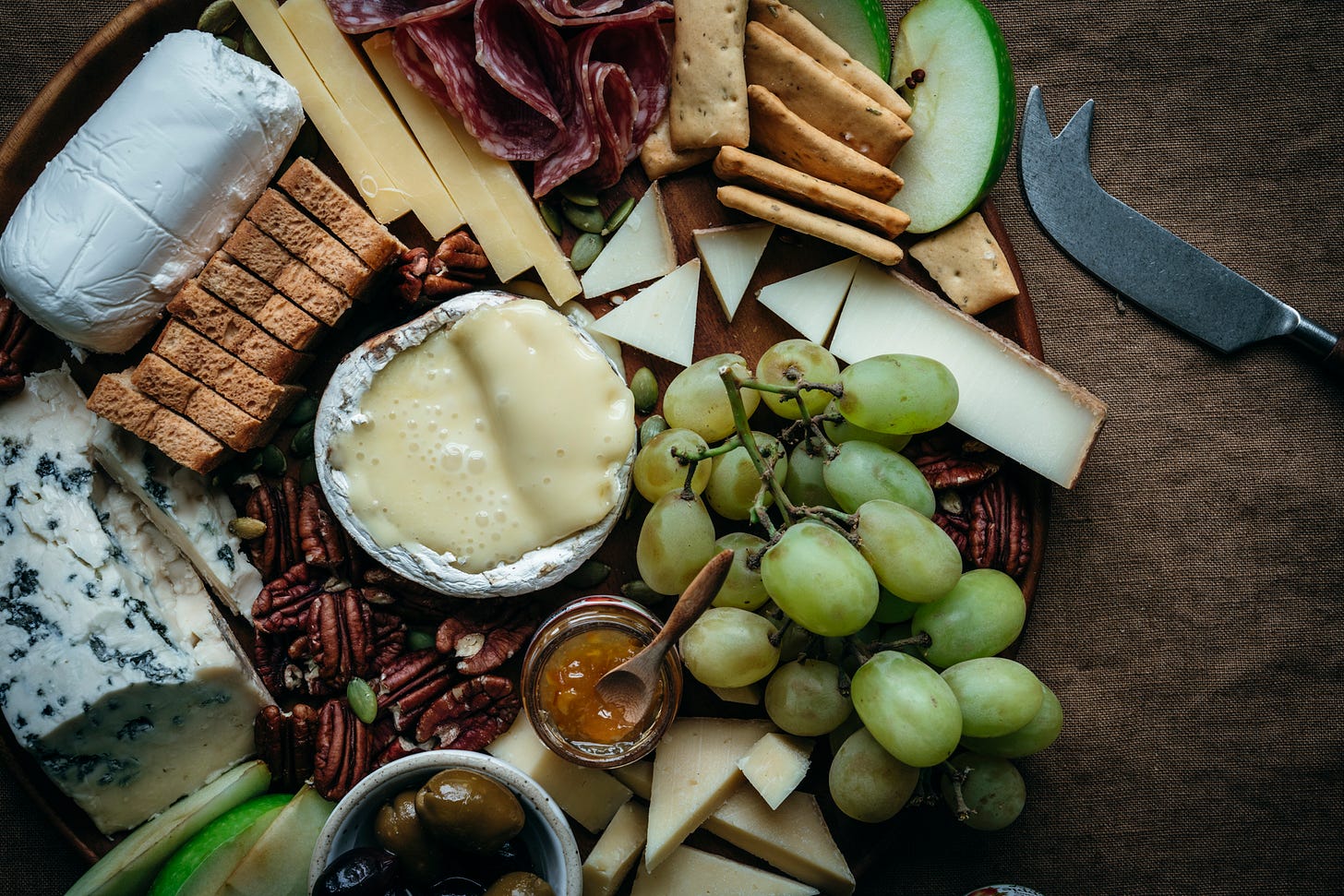
I love, love, love, a good selection of cheese but I really struggle with the idea that cheese constitutes a good first course or appetizer. Because of all the delicious fat and protein, it’s very satiating- it will make you feel full very quickly rather than sharpening your appetite for the food still to come. If you eat more than a couple of tiny slivers, what do you actually feel like eating afterwards? So it’s better as either a small, informal meal in itself, or a tail-end to a meal when you’re just nibbling to fill in the tiny remaining corners of your capacity.
Oh my Lord, that tagliere is insanely delicious. Good job Elisabet!